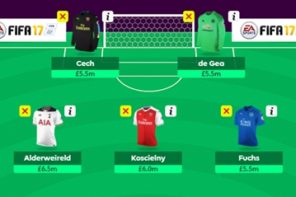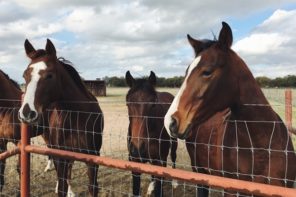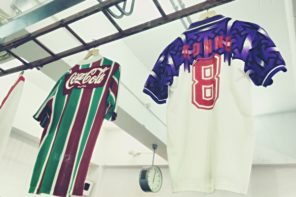When was the last time you watched a football match on television without checking Facebook, Twitter, Instagram, Snapchat, or Periscope?
If your answer is “it’s been a minute,” you’re not alone.
The vast majority of us now watch football with a second screen to experience the match in real-time, not just with our mates in the pub, but also with the millions of fans across the globe who have tuned in.
Naturally, much of the best content is created by fans themselves – from Wigan fan Sean Kennedy creating the breakout summer hit “Will Grigg’s on Fire” in his bedroom to the Iceland fans at Allianz Riveria celebrating their incredible Euros win over England. That unique celebratory chant has been viewed millions of times on social media and more people will have seen it on Facebook and Twitter than those who witnessed it live on TV.
However, some of the most popular posts – notably Nike’s “The Switch” video (pictured above), which has been viewed by nearly 345 million people across all platforms in the 33 days since launching – are specifically created to help brands capitalise on the natural fan interest in the enormous amount of football on offer this summer.
The Set Pieces spoke with Christianne Harder, head of digital for the Copa America, and Charlie Brooks at Nike to understand how some of the most popular social and digital football content we consume arrives, quite literally, at our fingertips.
Building a social team
The recently-concluded Copa America was watched by hundreds of millions of people worldwide, and Harder explained that “it was incredibly important for us to have a robust social and digital offering, as we wanted every fan, not knowing what their access would be to the games, to be able to enjoy the matches in real time.”
The Copa America digital team comprised around ten social media managers in three distinct language pods (English, Spanish, and Portuguese, plus “an occasional dip into French/Haitian Creole”), a graphic design team of six to eight people, two statisticians, a Portuguese translator, a content editor, and a lead social media manager, all of whom were based locally at Copa headquarters.
In addition, there were also social media managers attached to each of the 16 teams participating in the tournament who travelled with the squad to cover their respective journeys throughout the tournament.
“We started planning 15 months ago, which included securing the channels, writing the charter documents, and outfitting them with the original branding look,” said Harder. “Everything was put on hold when the tournament’s future was in an unclear position, but once it was announced we would be moving forward, our planning continued.
“The first step was to hire a Lead Social Media Manager and Content Editor. In February, we set out our partnerships with Facebook, Instagram, and Twitter. This ensured the creation of a Twitter emoji for the tournament [and] for Facebook Frames, Stickers, and messaging on Game Day.”
Harder and her team also partnered with Facebook’s MSQRD, which allowed fans to use filters to superimpose team-specific face paint onto their pictures. Once the team was hired, they did Spredfast training and went through a couple dress rehearsals.
Capitalising on real-time events
Shortly after Ricardo Quaresma scored the winning penalty kick against Poland to help send Portugal through to the Euro 2016 semi-finals, Nike posted the following video on their Twitter feed:
Last strike wins. #SparkBrilliance and settle the score like @07RQuaresma in #Hypervenom: https://t.co/OVGgSnWIHyhttps://t.co/4g6nq0I4R9
— Nike Football (@nikefootball) June 30, 2016
The tagline, “last strike wins,” is a clever play on the video’s bowling theme and the fact that Quaresma scored the last penalty kick of the game.
adidas are doing something similar this summer with their “achievement unlocked” content, as shown here in a tweet that came shortly after Renato Sanches’ goal in that same game:
ACHIEVEMENT: UNLOCKED ?
Rising Star Renato Sanches: First weak-foot rocket. ?#ACE16 #FirstNeverFollows pic.twitter.com/yginp44xC8— adidasfootball (@adidasfootball) June 30, 2016
Brooks says Nike have evolved their “real-time strategy”. He explains that “rather than just leveraging match moments to distribute brand messages, we’re exploring how players prepare for big moments, and then making those tools and techniques available to any aspiring footballer. You’ll notice that we focus a lot on pre-game moments to elevate and explain our new mental training service, Pro Genius, in a way that’s authentically connected to our players’ reality.
“We also focus on the Nike Football App with a lot of our real-time storytelling. Our app users are people who have opted directly into a relationship with us, so we want to ensure they are the first to have access to our best stories.
“The app also enables dynamic content targeting (author’s note: dynamic content is content that changes based on previous behaviour of the user and other data points. It is used to create a specifically tailored and customised experience for each user). Our app capabilities combined with sophisticated targeting on most social networks provides us the opportunity to enable our teams to focus on locally relevant stories.
“We’ve created dynamic content, including reactive short animated films connected to athlete moments and the boots they wear, NIKEiD stories, and athlete poster images.”
Working with footballers
Nike Football have a perfectly good Facebook page with well over 40 million fans, but only posts once every few days or so. Instead of focusing on the Nike-specific football/soccer page, Nike have taken a more active role in their footballers’ own personal channels.
For example, this short video, posted on Cristiano Ronaldo’s Instagram account, touting the previously-mentioned “Pro Genius” feature in the Nike Football app, has been viewed over three million times. Similar (but specifically tailored to each footballer) videos have been posted on the social media channels of other Nike footballers such as Anthony Martial, Joe Hart, and Kevin De Bruyne, to name a few.
Brooks also shared that “before we produce anything, we identify players who are a good fit for the campaign – from a playing perspective, personality perspective, and social media perspective.”
“These insights start from our local teams that work with athletes on the ground on a regular basis,” he says. “We then present our ideas directly to the player. Then, we can create bespoke content for each athlete and discuss when, where and how we – or they – might publish this content and be part of our campaign. We have a relationship with more players than any other brand, and this approach allows us to leverage those partnerships while creating mutual value for our brand communities and our athletes’ communities.”
Neymar, for example, does not appear to be involved in the “Pro Genius” campaign, but has been heavily involved in a collaboration with Nike’s Jordan brand, typically seen on the basketball court rather than the football pitch.
It looks as though these cross-sport partnerships and marketing campaigns will become much more common, especially as football continues to grow in the United States and the NBA and NFL continue to grow worldwide.
How to navigate cultural and linguistic borders?
Football is one of the few things that truly resonates globally and is a fairly unique shared activity in that it can transcend linguistic, cultural, geographic, ethnic, and religious borders. That said, when creating social and digital content, the goal is to make it as engaging as possible and so linguistic and cultural differences must be addressed.
To that end, when building out her social media team for the Copa America, Harder “made sure to hire social media community managers that represented multiple countries, so we could be sure we were putting out the most accurate message.”
“In addition to our English-speaking crew, we had people with backgrounds from Mexico, Argentina, Brazil, and other countries,” she explains. “It may take a little longer to get out content, but having that collection of people allowed us to ensure we had the correct phrasing for the fans.”
Harder found that the Copa Facebook engagement was predominately coming from fans in the United States, Mexico, and Colombia, and the most engaged-with posts were in the Spanish language. However, on Twitter the English-language channel had the most followers, but the Portuguese-language channel had the largest ‘influencers’ following and retweeting them.
????????????????????????????????
Thank you to all our of our fans that made #Copa100 so special!! #CopaAmericahttps://t.co/hJYLpPgDcP
— Copa América 2016 (@CA2016) June 27, 2016
Brooks explained that, for Nike, “being locally relevant is critical to our success”.
“We rely on our worldwide network on a daily basis. Most of our social media content is either created at the local level or localised and adapted to maximise relevance,” he says. “We’ve spent a lot of time refining [the] process that allows us to quickly translate and localise content, plan at the local level, and share content across teams.
“When people search for ‘Nike Football,’ they typically find ‘nikefootball’ on Snapchat, @nikefootball on Instagram, Twitter, or YouTube first. [However], we have 46 local Facebook pages, our local teams target local tweets in local languages on a daily basis. Local teams use our Instagram channel to comment and engage with user-generated content, and we routinely host local video content to YouTube and ensure YouTube content has closed captions in relevant languages.
“We also have nike.com localised in 58 countries and regions in local languages and our Nike Football app is available in 60 countries and in 19 languages. We have teams around the world ensuring that social and owned platforms reflect local nuances and needs.”
Somewhat paradoxically, it would appear that both major tournaments and major brands focus on reaching a global fan base by ensuring that the content is modified to best reflect the language and culture of as many local communities as possible.
This sentiment was echoed by the Bundesliga executives – whom The Set Pieces interviewed last year – to discuss their respective strategies to capture the emerging Japanese market.
帰ってきた!#wiederhier #backhome pic.twitter.com/GkyXRxoHfo
— Borussia Dortmund (@BVB) August 31, 2014
Schalke set up Japanese-language Facebook and Twitter pages as well as a Japanese-language website and online shop. In doing so, they immersed themselves in Japanese culture and prioritise taking Japanese customs and holidays into account.
Schalke were also the first Bundesliga club to establish a presence on LINE, Japan’s largest social network. Similarly, rather than simply hiring translators to translate their website into Japanese, Borussia Dortmund hired writers from Japan, who would be well-suited to better communicate the club’s news to a Japanese audience.
It makes sense once the experts explain it (of course, fans who connect with a club or brand are more likely to be loyal fans) but it is quite interesting that these global entities devote so much time and resources in an attempt to make meaningful connections with followers and would-be consumers in so many different individual markets.
Which platform and why?
Brooks raises the point that “people use different platforms for different things,” and so naturally it makes sense to “align to that behaviour and unique value”.
“Maintaining platform authenticity is very important to our presence online as a brand,” says Brooks. “For example, we use Snapchat when we have an opportunity to take our followers somewhere inside the brand for an extended period of time – inside the dressing room before a match, live at the grounds of St. George’s Park, an exclusive brand event or behind the scenes at a shoot.
“Instagram is more conducive to a ‘look book’ or magazine cover approach, focusing on key brand stories through photography or video. We are very curated on Instagram.
“To articulate the difference between Instagram and Snapchat, for example, image we had an event going on. We’d elevate one or two key images on Instagram, representative of the most key aspects of the story. Everything else would be on Snapchat, [where] we’d cover all the in-between and behind the scenes moments.
“Twitter is a like a global town square. It’s where people go to share ideas, news and have conversations based on what’s going on in the world. Therefore, we use Twitter when we have something to contribute to this conversation. You’ll see us use Twitter to break news or distribute a message when being in real-time is important. We also have a lot of one to one conversations on the platform.”
Harder notes that Twitter is perfect for in-game content. “We have also seen that 80 per cent of tweets using the Copa America hashtags (#Copa100 or #CopaAmerica) are from people under the age of 24. On the big nights, we have hovered around 125,000 tweets.”
Harder pointed to dynamic graphics as popular shared content, and specifically their “Today I’m With…” graphics.
Overall, the most engaged with content at Copa America was Facebook Live, and especially when it was used for the post-match interviews. During the lead up to the Copa America and during the tournament, the official Facebook page grew to well over two million fans, with over one-third of the fan base actively engaging on a daily basis.
Conclusion
As social media continues to entrench itself as an indispensable part of the football fan experience, those in the industry who best understand how to utilise various platforms to convert followers into loyal brand ambassadors seem to enjoy a significant competitive advantage.
Understanding and embracing each of the different communities you’re trying to reach on each specific social media platform appears to be fundamental to success and, while it involves significant time and resources, it would appear to be a shrewd business decision in terms of return on investment.
To understand that, you only need to know that this Copa America was the most watched, most attended, and most social in its 100-year history and, in the time it took you to read this article, Nike have made over a million dollars in sales.
Jake Cohen is a lawyer in the sports team at Mills & Reeve and can be found on Twitter and Instagram. He’s also trying to figure out how to use Snapchat at ‘jake.fc’.






